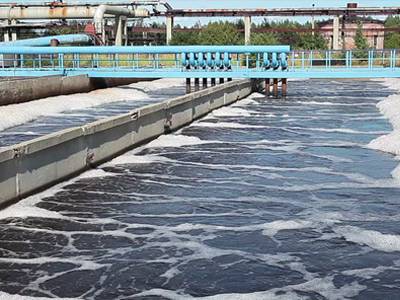Description
Common Effluent Treatment Plants (CETPs): A Comprehensive Solution for Sustainable Industrial Wastewater Management
Introduction:
Common Effluent Treatment Plants (CETPs) represent a crucial solution for industries facing the challenge of managing their wastewater effectively and sustainably. These centralized treatment facilities provide a cost-effective and environmentally responsible alternative to individual treatment units, consolidating the wastewater streams from multiple industrial units within a designated industrial area or cluster. This collaborative approach significantly reduces the environmental impact, improves operational efficiency, and promotes responsible industrial development.
Key Features & Benefits:
- Centralized Treatment: CETPs collect and treat wastewater from multiple industries, eliminating the need for individual treatment units and reducing overall land requirements. This significantly streamlines the wastewater management process.
- Economies of Scale: Shared infrastructure and operational costs translate to significant cost savings for participating industries compared to independent treatment solutions. This is particularly beneficial for smaller industries that might struggle with the capital investment of individual plants.
- Improved Environmental Compliance: CETPs ensure that treated effluent meets stringent regulatory standards, minimizing the environmental impact of industrial operations. This helps industries avoid penalties and maintain a positive public image.
- Enhanced Water Quality: Advanced treatment technologies employed in CETPs effectively remove pollutants, including organic matter, suspended solids, heavy metals, and other contaminants, resulting in cleaner effluent that can be safely discharged or reused.
- Resource Recovery: Modern CETPs are designed to recover valuable resources from wastewater, such as biogas, sludge, and reclaimed water. This promotes a circular economy and reduces waste.
- Reduced Pollution: By concentrating treatment, CETPs significantly minimize the amount of pollutants released into the environment compared to scattered, individual treatment systems.
- Technological Advancements: CETPs can incorporate cutting-edge treatment technologies, such as membrane bioreactors (MBRs), advanced oxidation processes (AOPs), and anaerobic digestion, ensuring highly efficient and adaptable treatment capabilities.
- Improved Collaboration: CETPs foster collaboration among industries, encouraging information sharing and best practices for environmental sustainability.
- Simplified Regulatory Compliance: A single point of contact for regulatory compliance simplifies the administrative burden on participating industries.
Typical Treatment Processes:
Depending on the specific industrial cluster and wastewater characteristics, CETPs typically utilize a combination of treatment processes, which may include:
- Preliminary Treatment: Screening, grit removal, and oil-water separation.
- Primary Treatment: Sedimentation and equalization.
- Secondary Treatment: Activated sludge process, trickling filters, or rotating biological contactors.
- Tertiary Treatment: Filtration, disinfection, and advanced oxidation processes for enhanced pollutant removal.
- Sludge Management: De-watering, digestion, and disposal or reuse of sludge.
Applications:
CETPs find wide application across various industrial sectors, including:
- Textiles: Addressing dyeing and finishing wastewater.
- Food Processing: Managing organic-rich wastewater.
- Pharmaceuticals: Treating complex and potentially hazardous waste streams.
- Tanneries: Handling high-strength wastewater containing chromium and other pollutants.
- Chemical Industries: Treating a variety of wastewater streams with diverse pollutants.
Conclusion:
Common Effluent Treatment Plants offer a sustainable and cost-effective approach to managing industrial wastewater. By centralizing treatment, promoting collaboration, and leveraging advanced technologies, CETPs play a vital role in achieving environmental compliance, resource recovery, and sustainable industrial development. Investing in a CETP is an investment in a cleaner, healthier environment and a more responsible industrial future.
